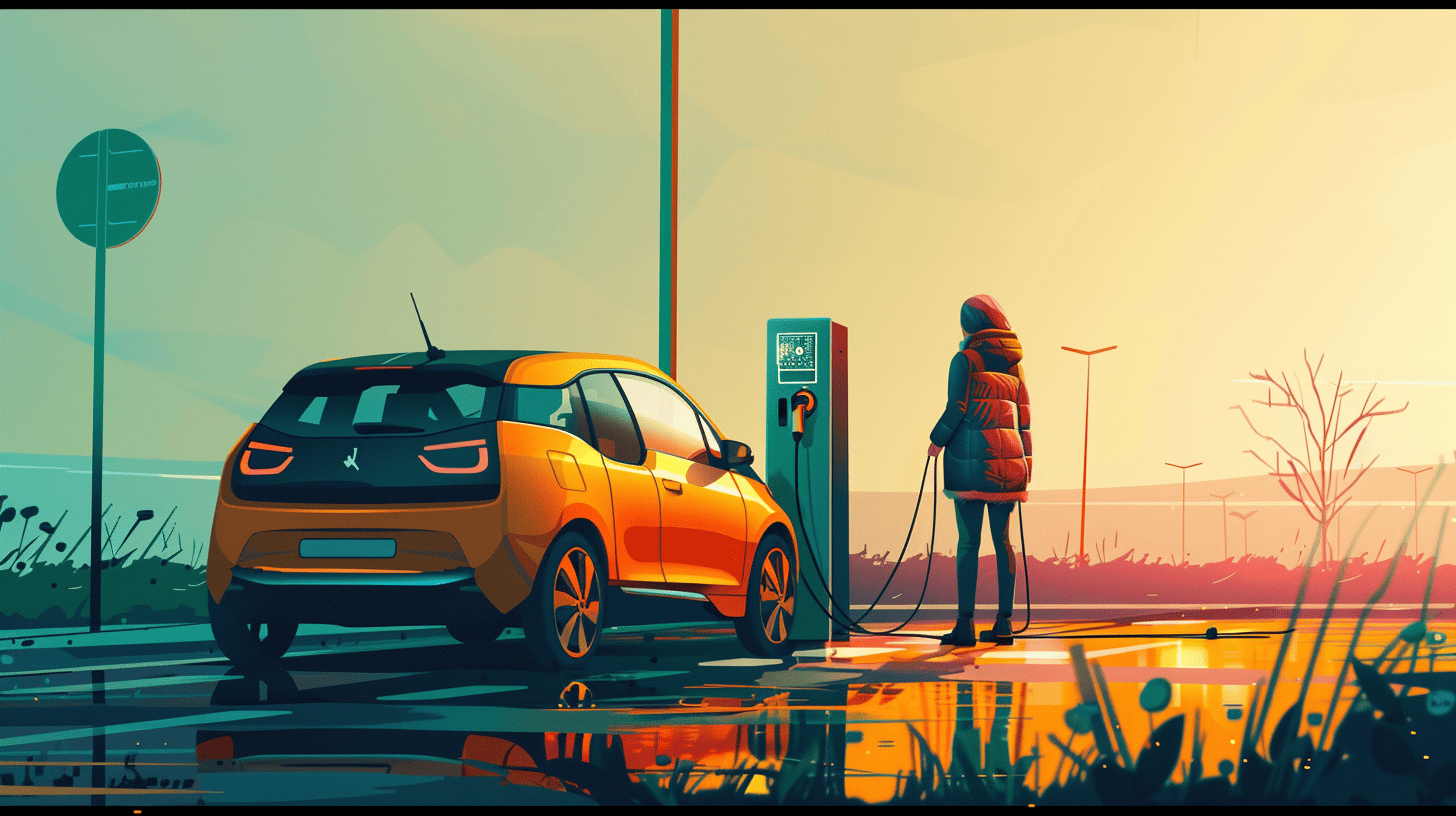
Efficiency can be simply defined as how far you can travel with a certain amount of fuel. Seeing efficiency from another angle, the question is: how much power do I need to drive a kilometer? Cars move by converting energy from fuel – either it being petrol, electricity, or diesel – into kinetic energy, the energy of motion. Efficiency measures how much fuel energy is converted into kinetic energy to get the tires rolling. Therefore, the most efficient cars are the ones that use less energy for the same performance.
In internal combustion engine cars, efficiency is described in kilometers per liter. For electric vehicles, it’s described in watt-hours (Wh) per kilometer. That’s not the only difference between the two. The first and most important one is the engine’s efficiency.
Why EVolution
Eleven years from now, newly sold cars in the EU must have zero emissions standards. As sales surge, electric vehicles are poised to be the ones to decarbonize Europe’s car fleet. Where do we start from? What are the outlooks towards the years to come? As the deadline is established, we feel the importance of informing our audience more on the topic. So comes EVolution. At IO, innovation and technology are our core business, so we’ll focus this series on some of electric mobility’s most discussed – and sometimes controversial – aspects.
An EV engine is more efficient
One of the pros of EVs is their efficient engines. According to metrics by the US Department of Energy, EVs convert about 65 to 69 percent of the electrical energy from the grid into power to move their wheels. This is over three times the efficiency of internal combustion engines (ICE), which can convert sound 17 to 21 percent of the energy of diesel or petrol into moving the car.
Why is there such a difference? Most of the energy an ICE produces is waste heat, which, combined with the energy used by components connected to the engine – such as the fuel pump – and drivetrain losses, makes up for such a high share of lost energy. Conversely, EVs can recapture some of the original energy through regenerative braking. As explained in the previous episodes, regen braking can boost an EV efficiency by up to twenty percent more, feeding back re-captured energy to the battery. With this returned energy, an EV uses around 87 to 91 percent of the original energy.
As a result, EVs use less energy to drive the same distances. In the graphs below, we compare the efficiency of the five most-sold EVs in 2023 with the five most-sold ICE cars in Europe. Taking the official WLTP figures provided by the automakers, we converted the value of kilowatt hours per 100 kilometers into liters of petrol – a liter of petrol contains around 8,9 kWh of equivalent energy. Electric cars all use less than two liters of equivalent petrol to drive 100 kilometers, while ICE ones need no less than five to drive that distance.
A bigger battery can compromise efficiency
In the previous episode, we delved into range and all factors influencing it in EVs, from outside temperature to wear. In one of the graphs presented, we put all the cars available on the Dutch market, relating their price and the certified range. More expensive cars certainly tend to have larger battery packs, allowing for longer driving range. Although automakers offer different versions of the same models with different battery pack sizes, you might think adding a larger battery is enough to boost an EV’s range. Well, it isn’t that simple.
The main reason is cost: the battery pack is the single most expensive component of an EV, and bigger batteries cost more. As automakers scramble to increase their EV sales, adding larger batteries wouldn’t help. The second reason is an engineeristic one: efficiency.
Battery packs are heavy and increase a car’s weight sensibly. For example, the electric version of the Fiat 500 has a curb weight of 1.351 kilograms, over two hundred kilograms more than its petrol counterpart, which weighs around 1.136 kilograms. Having a heavier car to move means using more power, as it does when driving with five people onboard. Integrating a larger battery pack isn’t as straightforward and definitely influences an EV’s efficiency.

Design is a key to efficiency
If adding a bigger battery isn’t a solution, what else can be done to maximize an electric car’s efficiency? Design is the answer. If you are a Formula 1 fan, you’re already pretty familiar with aerodynamics. Given the higher efficiency of electric engines, EVs are much more sensible to aerodynamics. Therefore, carmakers focused on more aerodynamic designs to overcome drag.
Also known as air resistance, drag describes the forces opposing an object’s relative motion as it passes through the air. Automobiles, trains, and airplanes counteract this force by exerting a force that makes them move at the desired speed. Air resistance is proportional to speed since it increases as acceleration increases. Less drag implies using less energy to move and consequently being more efficient.
As a result, a sleeker design can make a difference. EV chassis lines tend to be softer and accommodate air flows. To reduce drag forward, some carmakers launched models without side mirrors but with small cameras on the side instead. The Hyundai IONIQ 5 and Audi’s e-tron range vehicles offer this option. What are the most efficient cars on the market? We made a table for you with the options available on the Dutch market.
Tesla leads efficiency rankings
As shown in the table above, the Tesla Model 3 is currently the most efficient EV on the market, with 139 watts needed for each kilometer driven, according to the EV Database real range index. Tesla declares 130 watts per kilometer in the WLTP cycle. Two versions of the Hyundai IONIQ 5 follow. Currently, the cheapest car on the Dutch market, the Citroën e-C3— coming at €24.290— uses 166 watts to drive a kilometer. Yet, the first car costing less than €40.000 that comes with an appealing efficiency is the Opel Corsa in its 51 kWh version— costing nearly €14.000 more than the e-C3.
Once again, batteries came up as a cornerstone of EV tech— in this case, for their costs and their importance in influencing the efficiency of an electric car. Batteries will be the protagonists of the next episode of EVolution, too. Next week, we will delve into the different battery chemistries available.








